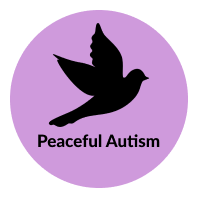My aim when writing this article isn’t to make people think that every other person, we meet could be a potentially dangerous and toxic individual – most people are perfectly fine and we all have varying degrees of positive and negative traits. I just want to highlight the dangers presented by a very small percentage of the population.
AS people are at particular danger of being caught in the hands of toxic individuals that use subtle manipulation to keep a tight rope of control around them. Emotional predators feed on the naivety the empathy and caring nature of individuals, neurotypicals, and AS alike. However due to their particular unique lack of savviness it is my belief that AS people are in increased danger of falling prey to toxic predators.
These predators use and discard people at their own pleasure and can leave their victims emotionally, psychologically and economically destroyed.
There is increasing awareness of the existence of these individuals, People are starting to believe what seemed unthinkable – the existence of human beings devoid of conscience and empathy who not only do not care about others, but who thrive and get their boost from other people’s pain.
When I am talking of ‘toxic individuals‘, I am referring to psychopaths’ sociopaths and malignant narcissists.
There is a good body of scientific research about these kinds of individuals and well-documented information about how they operate. Hervey M. Cleckley and Robert Hare being leading authorities in the field.
Also, and no less important are the testimonials of victims of these individuals that help us to understand a ruthless and devastating kind of abuse.
What are their motivations what is their modus operandi? Do they act alone.
We do not need to study a psychology degree to understand the most important basics to protect our loved ones and ourselves
First of all, we need to know that these toxic individuals are around us in the different spheres of our lives this is workplace home and our circle of friends.
Most toxic people are not the prototypical criminals that are so popular in people’s perceptions. Contrary to general belief, these people are attractive, magnetic and well-groomed individuals that take care to cultivate an image as the kindest and most helpful human beings.
Physical aggression is not the preferred tool (although I am not saying that they do not use it). To the outside world they will present a spotless clean image. They create a persona that is blameless and they will do anything to keep this image going as long as they can.
It is close proximity that produces the most dangerous scenarios and many times people are involved in situations where they cannot completely avoid these people because of family ties, job commitments etc.
So, it is fundamental that we are aware and literate of what constitutes healthy relationships and that we learn to spot conduct that does not fit a healthy pattern.
We need to learn to spot red flags that toxic individuals display in violation of the healthy rules of human engagement (I believe that we should teach this to children and young people in schools in an appropriate pedagogic way as this is a protective tool that will last a life time).
These people have an ability to find their prospective victim’s weakest spots to perfection and use this knowledge to lure their victims into a subtle, mental and emotional control. it is widely accepted that they can sell ice to the Eskimos.
They have poor impulse control, lack of empathy and callousness, and a grandiose self-image of themselves. They do not believe they are doing something wrong when hurting and abusing people.
They see people as objects to be used and discarded. They feel special and unique and they do not feel remorse about this. Most experts believe that they cannot change, and that they can fake repentance and pretend they have changed, and they can fool anyone.
It is important that when neurotypicals and AS people, especially the young, are gaining independence and starting to form friendships and romantic relationships and even job connections, they, their families and carers, must be aware of any red flags that point towards a toxic abuse situation that they could be involved in.
The first question that victims ask is “why me?”, as their self-esteem is so low through the abuse from the toxic individual that they think that they are worthless and without any value and this is why they have been targeted.
The opposite is true, victims must understand that toxic individuals can choose people of great virtue and who are full of empathy. They are singled out for their great capacity of caring altruistic fairness. They are people with a rich internal life, something that the toxic individual does not have and envies deeply as they themselves have a shallow emotional life.
Some experts believe that people targeted by toxic individuals have innate insecurities that are discovered by the toxic person.
It is these emphatic natures that can be used against their victims as the toxic individuals will use this to trap the victim and keep control over them with lies and false pretences.
The toxic individual, aware of the empathy of the victim, starts with a pretence of goodness, altruism and charity and victimises themselves, inventing or exaggerating hardships in their lives.
They are pathological liars and extremely good at this so the empath falls into a trap as the rescuer of this ‘poor human being’.
They are so good at this that they do not always need to ask for what they want as they throw out their hook and line and the empath gives the toxic individual what they want on a silver plate.
Soon they will start the parasitic relationship which could be for money, resources, time; or for young people in the university setting, it could be asking the empath to do all their academic work, using the charming friendship card or aggressive approach.
It is fundamental that before going to university, neurotypicals and AS young people are coached about healthy boundaries, spotting toxic behaviours and are encouraged to share concerns with loved ones.
The most dangerous scenario is that the empath may not realise that abuse is taking place and that he gets to accept this situation as normal.
Isolation is the other tool the toxic people use in order to put distance, emotional or geographical, or both, between the empath and their support mechanism. This can be friends and family etc, so the abuse cannot be witnessed and the person will not have any sounding board to validate his depredation or ask for help.
In isolation, the toxic individual can use the cruellest of tools in their arsenal – this is gas lighting. With gas lighting the toxic individual will use a technique that makes the empath doubt his perception of reality and doubt her/his own mental wellbeing.
These people will not respect your boundaries. They have a sense of entitlement that is extreme as what they want is the only important consideration, and they feel that they can take anything from the empath, money, time, connections, anything.
They are master manipulators and know who can help them to reach their ends in any area they are involved in, from the manager of an office who takes credit for her employer’s work and starts a campaign of gossip and slander, forcing their victim to resign or get sick leave, to the cleaning lady that manages to trick their victim into ‘helping’ with their load on an unfair, regular and constant basis.
In the workplace the fact that the abusers manage to thrive is compounded by people around them who witness the toxic behaviour and look the other way in order to avoid confrontation; this enables the abuser to continue with their negative conduct with total impunity. Witnesses are silenced through fear, some kind of control, or by being charmed by the toxic individual. Many times, they become instruments of the toxic individual and join in the depredation. This phenomenon is called mobbing.
They are artists of disguise who mimic emotions like empathy and they can put on exceptional performances, Experts agree that many people fall for these pretences, in fact, they can even convince experienced psychologists and other mental health professionals.
They are also artists at charm offensives and at mirroring so they will read your needs, wants, and preferences and they will pretend that they like the same things.
It is well known that people, when meeting with these toxic individuals, are in awe of their similarities in tastes and outlook of life, when in fact what all they have done is an exercise of cut and paste.
In the romantic sphere people think that they have found THE ONE and feel intoxicated with their kindness, love and details such as flowers, gifts, poems, songs. This is done in an extreme and over intense way.
This is in fact the initial hooking stage called ‘idealisation’ that is only a preamble to the abuse that will take place. One give away many experts believe is the rapidity in which this relationship develops. They want to start and seal this relationship at a fast speed before their lies and inconsistencies are made evident.
So, when when a relationship develops too fast – beware (in social relations time is important to build solid and healthy engagement). So, before committing your inmost feelings, thoughts, dreams, freedoms, and economical resources into the hands of an ‘amazing individual’ that you have just met, think, pause, and ask yourself, “Why is she/he going so fast?”
The toxic individual is wearing a mask and there is nothing real behind it. When the mask slips (which can take years) the most painful part for the empath involved in this relationship, is to come to terms with the fact that the person that they thought was their friend, wife or husband, did not truly exist, but was a carefully constructed lie.
According to experts, there are many positive interventions that people who are caught in toxic relationships can use to regain their freedom. The number one is going non-contact. That is, cut all ties with these people and when this is not possible, there are other options that can be given by a professional expert in these kinds of toxic relationships.
Professional help is needed because what has been created is a trauma bond, similar to the Stockholm Syndrome, and a powerful addiction.
This can entail a painful process of healing as the aftermath of this type of abuse needs professional help and a caring, loving and solid support group (well-informed about toxic abuse).
This reality can be uncomfortable to accept but we cannot live in a bubble. Being aware of the existence of these toxic people and how they operate is a great protective step.
We must choose the people with whom we engage wisely. We must avoid rushing into our relationships and we must take the time to know people well.
We must make a conscientious pledge to ourselves to choose people that respect our boundaries, and to choose people that do not need to be rescued or that promise to rescue us.
Above all we must never allow toxic people to steal our peace, happiness and joy, and most importantly, our God given gift of autonomy.










